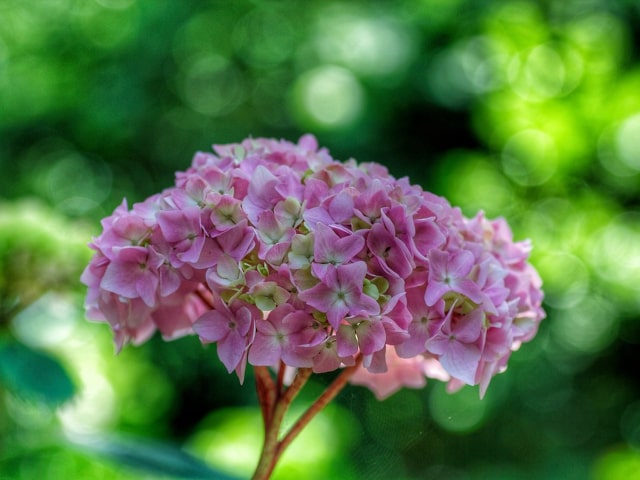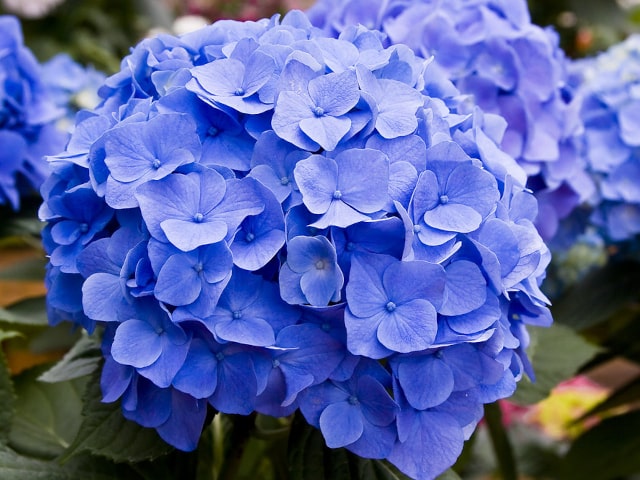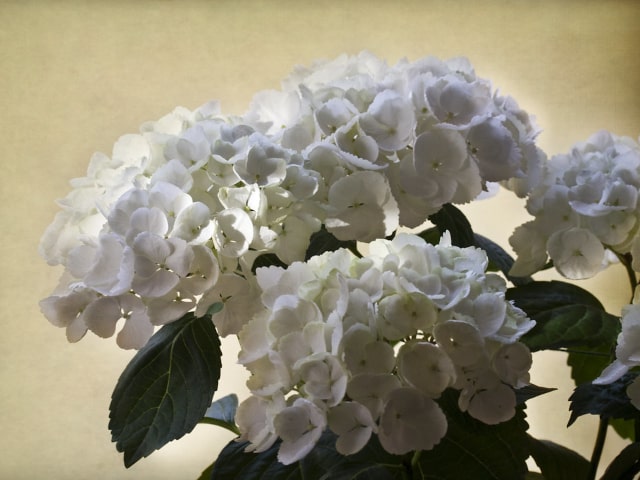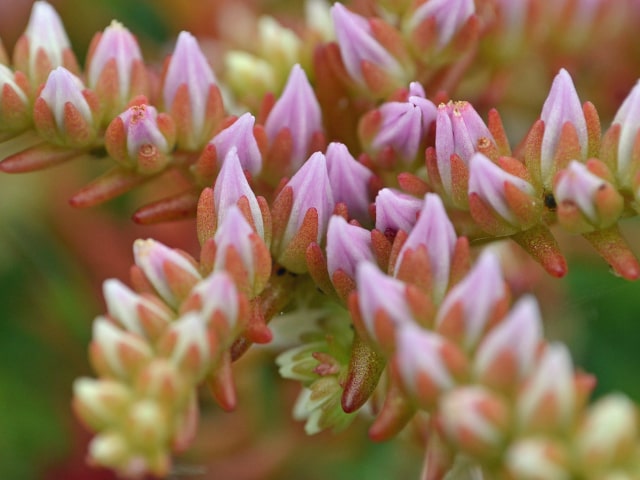
Hydrangea macrophylla (mophead) is a popular house plant, known for its beautiful flowers. It can bring charm and style to your garden. This plant has flowers in many different colors, such as blue, white, pink or purple. They can be cone-shape or round and made up of one kind of flower or two. Hydrangeas have large leaves and they set off the flowers as the flowers bloom and fade.
There are many different types and varieties of hydrangeas, so it's important to know how to choose the best one for your garden. Knowing how to pick among different hydrangea types is important because it's the easiest way to know which one will suit your needs and preferences best.
There are 4 basic types of hydrangea commonly found in nurseries, garden centers and catalogs. It's important to know that they all differ in appearance as well as general care requirements.
1. Hydrangea arborescens grandiflora
This popular type of Hydrangea can grow to about 3'. It's upright, dense and it has huge, ball-shaped flowerheads. The flowerheads are creamy white in color and 10" across in size. This variety blooms on the current year's growth. It means it can be severely pruned and still produce flowers. This type of Hydrangea us hardy to USDA zoen 4. It can do well in partial shade.
The most common cultivar is "Annabelle", though there are some new cultivars currently being developed and gaining popularity on the market.
2. Hydrangea macrophylla (mophead and lacecap)
This variety has flowerheads in two forms: mopheads (with flowers all of one kind), and lacecap (with larger flowers surrounding smaller flowers in the center). Both of these types can have pink or blue flowers, depending on the pH of the soil. If the soil is alkaline, the flowers will be pink in color, while acidic soil will produce blue (to purple) flowers. It's also important to note that certain cultivars tend to be more blue or pink than the others. There are also cetain white cultivars available on the market, but they are not as common, and they don't change color.
This variety of Hydrangea can grow up to 12' in height. It prefers partial shade and it's hardy to USDA zone 5-6. It means you can grow it successfully outdoors even in the northern climates. In the north they are also often grown as houseplants.
Another thing to keep in mind is that their flowers form an old growth so winter or pruning can destroy flower buds. This will result in bush without flowers.
There are also some new cultivars being developed, such as Endless Summer. This cultivar blooms on both new and old growth. Therefore, it will rebloom during the summer.
3. Hydrangea paniculata
This variety is very coarse in texture. It can grow up to 25' in height. It has white flowers borne in panicles (long, pyramidal clusters) in late summer. They gradually change color to pink and purplish as they age.
This variety is hardy to USDA zone 4. It needs some sun to thrive and bloom well, so it's something to keep in mind. This variety of Hydrangea can be pruned any time you like, except during the time when buds are forming. This is the only type of hydrangea that can be pruned into a tree.
The most common variety is Peegee hydrangea, which got its name from its specific and varietal name, H. paniculata grandiflora. Limelight cultivar is becoming more and more popular every year. It has bright, chartreuse color.
4. Hydrangea quercifolia (Oakleaf Hydrangea)
This variety has creamy white flowers produced on erect panicles 4-8" long. The flowers are produced earlier in the summer than with other varieties of Hydrangeas. This is a 6' tall bush and it has leaves resembling those of a red oak. This is how this variety got its specific name "quercifolia".
This variety can turn different shades of red, orange, and yellow in the fall. This hydrangea variety is hardy to USDA zone 5. It's sometimes grown in northern areas just because of the numerous fall colors it produces. This variety can tolerate drier soil compared to other Hydrangeas. However, it can also rot easily if the soil is poorly drained.
Additional Information
These 4 common varieties of Hydrangeas are popular in garden centers. When choosing the best for your garden, color is usually the first characteristic you may want to take into account. For example, you might prefer pink or blue flowers, so to achieve it, you need to live in a region warmer than USDA zone 6.
In case you want to get fall coloration, oak leaf Hydrangea is the best choice. If you wish to have a tree-like form, choose H. paniculata. In case you have a very limited space, it's best to go with H. arborescens. This variety is also a good choice if you want to prune.
If you wish to grow your Hygrangea on a sunny spot, it's best to go with H. paniculata will probably fare best. For a dry spot, the best choice is H. quercifolia.
It's important to know that whatever variety or cultivar of Hydrangea you choose, it will sure provide a magnificent display of flowers during the time when few other shrubs are in bloom.
Photo credit: Kev Wheeler




0 Comments